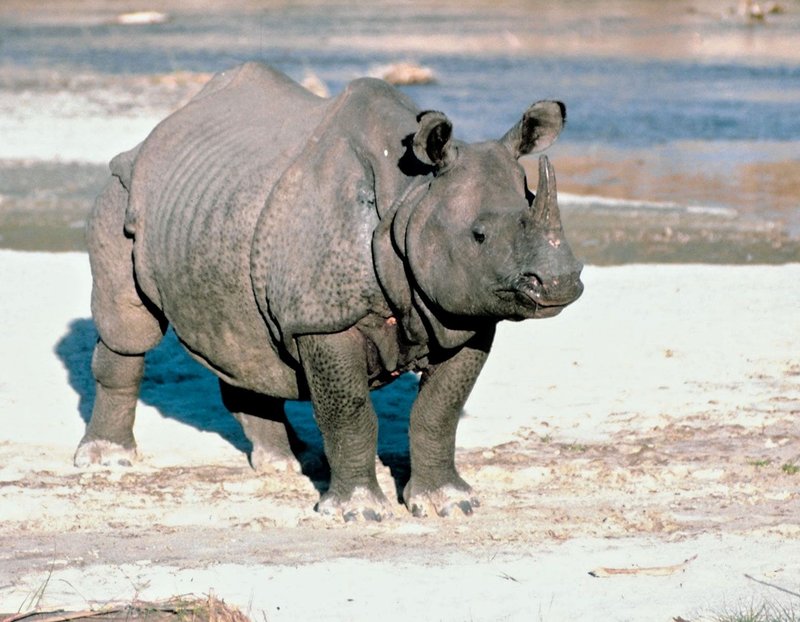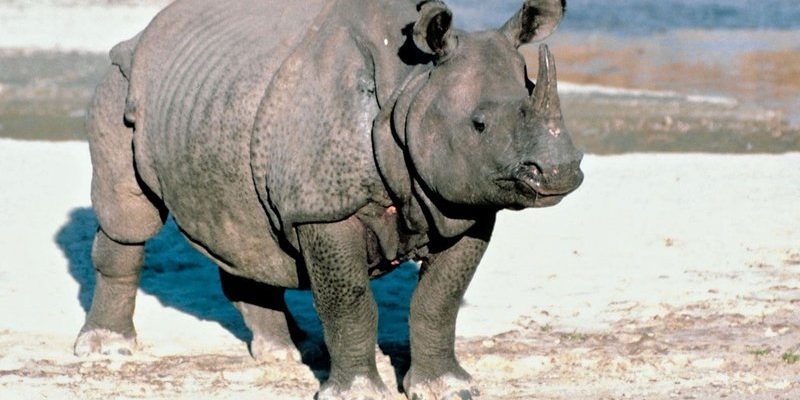
In this article, we’ll delve into the cognitive abilities and behavior of the Indian rhinoceros. We’ll explore what makes them tick, how they interact with their environment, and some surprising traits that showcase their intelligence. So grab a comfy seat, and let’s take a closer look at how smart these incredible creatures truly are.
Cognitive Abilities of the Indian Rhinoceros
The Indian rhinoceros is known for its impressive physical traits, but it’s important to recognize its cognitive abilities too. These rhinos have a well-developed brain that allows for a variety of complex behaviors. Their intelligence is often showcased in social interactions and environmental awareness. Here’s the thing: while we might not associate rhinos with high intelligence in the same league as dolphins or elephants, they do display a range of cognitive skills that make them quite remarkable.
What do these abilities look like in action? Indian rhinos are capable of recognizing their surroundings in ways that help them adapt and thrive. They can remember the locations of water sources, food, and potential dangers in their territories. This spatial memory is crucial for survival, especially in the wild where resources can be scarce. Just like we might retrace our steps to find a parked car, rhinos have their own mental maps of familiar places.
Additionally, studies have shown that Indian rhinos can solve problems and even learn through observation. For instance, they might watch other animals to figure out how to access food or navigate obstacles. This ability highlights their adaptability, making them more than just creatures of habit.
Social Structure and Interactions
When it comes to social behavior, Indian rhinos are generally solitary animals. However, they do have social structures that can be quite fascinating. You might be surprised to learn that they often engage in social interactions, especially during mating season or when mothers are raising their calves. These interactions can include various forms of communication, such as vocalizations, body language, and scent marking.
Speaking of communication, Indian rhinos use a combination of sounds to convey messages. They might grunt or whistle to warn others of danger or signal their presence. It’s like having a quiet conversation without words—something we humans instinctively do when we’re trying to avoid drawing attention.
Interestingly, mother rhinos are quite protective and nurturing. They form strong bonds with their offspring, teaching them essential survival skills. This nurturing behavior showcases not only their intelligence but also their ability to connect with others emotionally.
Learning and Problem Solving
You might be wondering how Indian rhinoceroses tackle challenges in their environment. Their learning ability is quite impressive! Studies indicate that rhinos can learn from experiences, which allows them to adapt to changing conditions. For example, if a rhino encounters a new type of barrier in its territory, it may take time to figure out how to navigate around it. This trial-and-error learning is a fundamental aspect of their intelligence.
One fascinating example involves how they interact with their surroundings. Indian rhinos have been observed using their powerful mouths to manipulate objects, like moving branches to access food. Just think about it—this isn’t just brute force; it’s a demonstration of their ability to think critically about how to achieve a goal. In that sense, they’re using logic and creativity, much like we do when we solve everyday problems.
Additionally, researchers have documented instances where rhinos exhibit behaviors resembling playfulness, particularly among younger individuals. Playing is a form of learning and socialization in many species, and it’s no different for these rhinos. You could say they’re not just tough creatures but also curious and playful learners.
Impact of Habitat on Behavior
The environment plays a significant role in shaping the behavior of Indian rhinoceroses. Their natural habitat, which includes grasslands and forests, impacts how they interact with their surroundings and each other. In the wild, they rely heavily on their acute senses to navigate through dense vegetation and locate food sources. This reliance on sensory input demonstrates another layer of their intelligence.
In areas where habitat is limited or fragmented due to human activity, rhinos may face challenges that test their adaptability. The encroachment of agriculture and urban development can force them to alter their behaviors, such as shifting their ranges or adjusting their feeding habits. By doing so, they showcase resilience, which is a sign of smart adaptation to a changing world.
Moreover, when rhinos are faced with threats, such as poaching, they display heightened vigilance. They become more aware of their surroundings and often change their habits to stay safe. This behavior emphasizes their capacity to learn from experiences and adapt to new dangers.
Conservation and Understanding Their Intelligence
Understanding the cognitive abilities of the Indian rhinoceros is crucial for conservation efforts. Educating the public about their intelligence can foster a deeper appreciation for these creatures and the challenges they face. The more we recognize their capabilities, the more likely we are to support initiatives aimed at protecting them.
Conservationists use insights from the study of rhino behavior to inform their strategies. For example, knowing that Indian rhinos can learn from trial and error can help create environments that facilitate such learning. Protecting their habitat and reducing human-wildlife conflict are essential steps in ensuring their survival.
Additionally, conservation programs often focus on community engagement. When local people understand the importance of Indian rhinos and their intelligence, they may be more inclined to support conservation efforts. It’s all about creating a symbiotic relationship between humans and wildlife, where both can thrive.
So, how smart is the Indian rhinoceros? While they may not fit the typical mold of highly intelligent animals, their cognitive abilities and behaviors reveal a creature capable of learning, adapting, and communicating. They navigate their environment with impressive spatial memory, engage socially during specific times, and problem-solve in various situations.
Recognizing these traits not only enhances our understanding of rhinos but also underscores their importance in the ecosystem. As we continue to study and protect them, we gain insights that can help ensure their survival for future generations. Next time you think of an Indian rhino, remember that there’s more to these gentle giants than just their size—they’re smart, adaptable, and deserving of our respect and protection.

